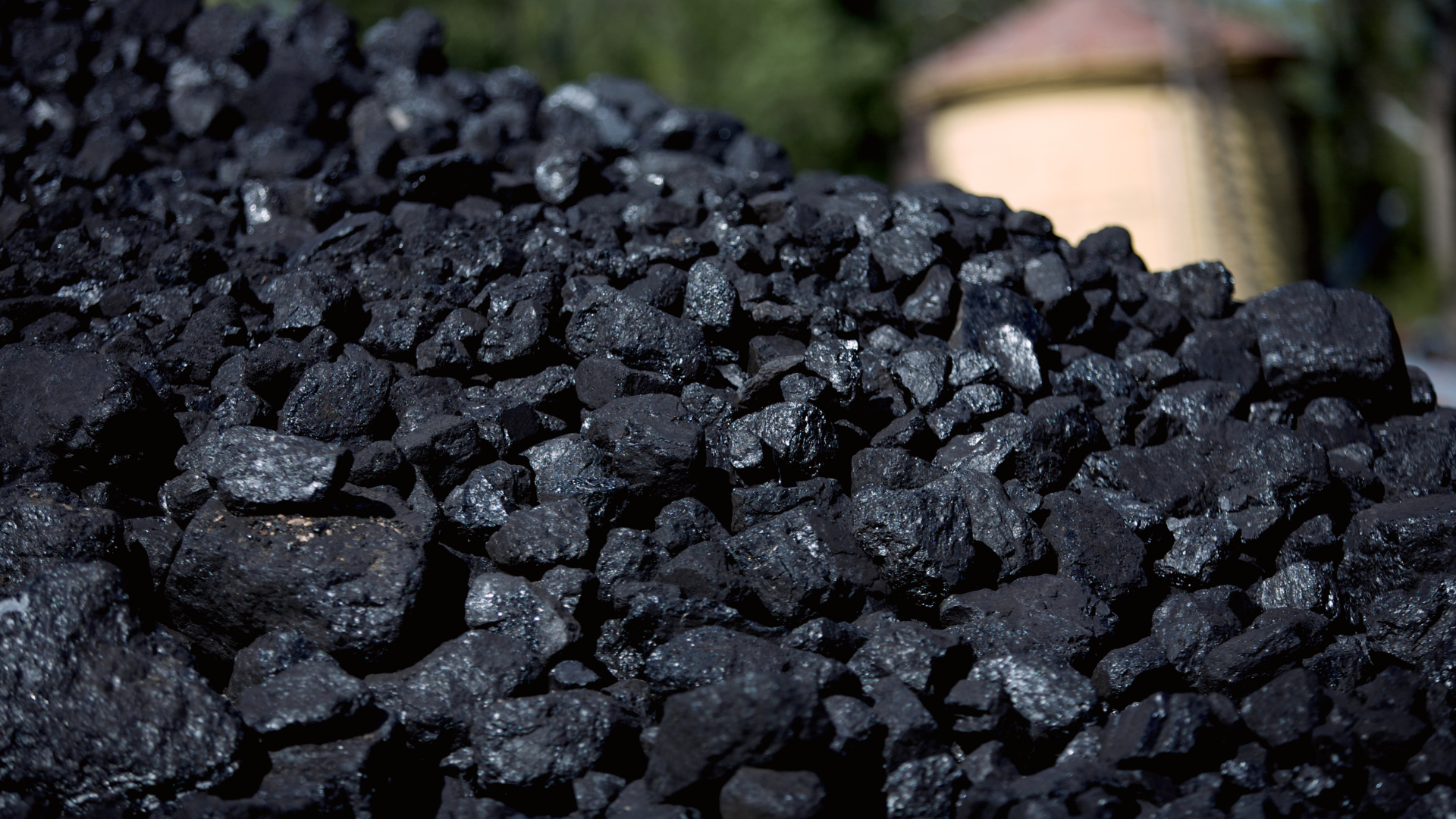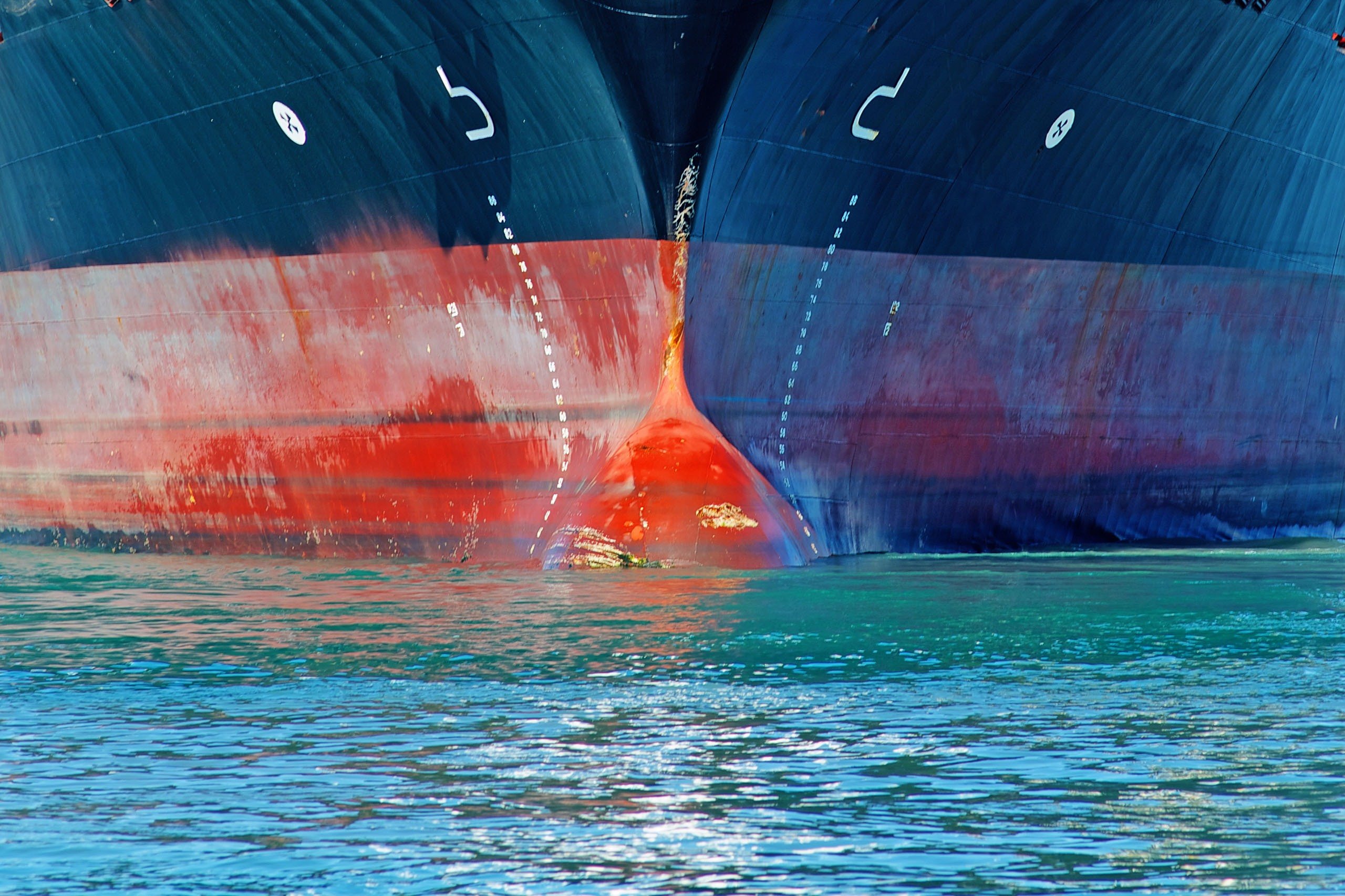Rust issues
The most common problem with steel cargoes is rust. The steel may have "streak" marks which indicate that water has run across the surface, "spots" localised slight penetrations of the mill scale, "stains": a tan-coloured and fine dust-like coating, "scale", a thick flaking rust, or might be "rusty": a thick coating of brown scale, which when removed leaves the remaining surface uneven or "pitted": penetrations of the surface with minor indentations which wire brushing cannot remove.
Pre-shipment Surveys and Clausing Bills of Lading
One of the ship's first important shields against a claim is that the damage to the cargo is often caused before shipment.
Steel cargoes will invariably display some mechanical damage, such as edge denting due to handling and some surface rust, making it difficult, if not impossible, to reject all cargo which presents defects. The Club will appoint a qualified surveyor to inspect the cargo and provide an expert report on the state of the steel products before shipment. This will often include details on the extent of rust and photographs. Mate's receipts and subsequently bills of lading must be claused with the surveyors' remarks on the cargo's condition.
It is usually the case that shippers can not accept a claused bill of lading, because this would breach the terms of the letter of credit provided by the banks to finance the purchase of the steel. In these circumstances, the shippers may demand that the bills of lading be marked clean and they may offer that the Owner accept an LOI to issue clean bills. As Members will be aware, marking a bill of lading clean when, in fact, it is not may prejudice club cover as the bill will not contain a true and accurate reflection of the cargo. In addition, an LOI may not be legally enforceable and is also only as good as the provider supplying it. Extreme caution must be exercised when contemplating whether to accept such a request.
RETLA clause
Members may also be requested to include a RETLA clause in bills of lading. This clause first appeared in a 1970 US 9th Circuit case, Tokio Marine and Fire Insurance Co. Ltd. V Retla Steamship Co. It was developed as a convenient way of issuing clean bills satisfying the interest of shippers and trying to protect the carrier from cargo claims. A typical RETLA clause reads as follows:
The term “apparent good order and condition” when used in this bill of lading with reference to iron, steel or metal products does not mean that the goods, when received, were free of visible rust or moisture. If the shipper so requests a substitute bill of lading will be issued omitting the above definition and setting forth any notations as to rust or moisture which may appear on the mate’s or tally clerk’s receipts.
Such clauses have been upheld in the U.S. on the basis that the RETLA clause was printed on the face of the bill of lading and was not confined to the fine print on the back and on the basis that the clause contained a provision that the shipper could request a substitute bill of lading which was claused to reflect the condition of the cargo noted in the Mate's receipts.
The position in the US is not the same under English law. In the case of THE SAGA EXPLORER [2012] (EWHC 3124), the English High Court refused to follow the US position and found the RETLA clause breached article III rule 8 of the Hague Visby Rules. The Court found that a carrier could not introduce clauses into bills of lading which would limit its liability for losses or damage to the cargo whilst in his care. This was rejected on the basis that: such a construction would rob the representation as to "good order and condition" of all effect.
The only safe means of avoiding claims arising from pre-shipment damage is therefore to ensure that the bill of lading is claused to reflect the apparent order and condition of the goods at the time of loading. Failure to properly describe the condition of the cargo leaves the carrier open to allegations of being a party to misrepresentation, particularly from third party purchasers of the cargo who have only contracted based on the bill of lading, and who have not been shown any pre-shipment survey by the sellers.
Loading / Lashing / Stowing / Securing / Storing steel outdoors and loading during rain
Storing steel products in the open, both before shipment and after discharge can be risky. Some types of steel cargo, such as construction steel, are stored in steel producers' premises for some time before being delivered to the load port. The steel is usually transported from the factory to the port by rail, either in open or covered wagons or lighters which are covered but not necessarily water-tight or on flatbed trucks. There is a risk of free water collecting at the bottom. Furthermore, cargoes are frequently assembled some time before the ship arrives at the loading berth and the cargo of steel is usually stored, unprotected, in the open. It will be exposed not only to the risks of rain, but also to the atmosphere, which contains salts and is usually polluted. The amount of rust can increase drastically in these conditions.
Extra caution is advised when it starts to rain during loading operations. Although short periods of rain are not necessarily a reason to refuse to load, steps must be taken to ensure that the cargo is kept dry. If the cargo gets wet, free moisture may collect on the tank top and build up in the compartment, resulting in some of the cargo being submerged in rain water. Atmospheric rusting will also be exacerbated.
A surveyor should be appointed to ensure that all reasonable steps are taken not to increase the risk of damage to the cargo. When deciding whether and how to load cargo during rain, special consideration must be afforded to changes in temperature, which are anticipated during the course of the voyage and to the effect that rainwater may have on the other cargo, already loaded in the compartments.
In the above circumstances, bills of lading should always be marked "wet before shipment" and advice should be sought from the Club's local correspondent on further steps to take.
Strapping bands on coils
Special care must be taken to ensure that coils at the time of shipment are tightly wound with strapping bands. Coils which have slackened off due to broken or slipped security bands can cause instability of the stow and handling problems. Claims may also arise from the mills which uncoil the cargo as they may need to slow down, potentially causing disruptions/losses in their production programme.
Furthermore, when tightening coils which have slacked off, special care must be taken to ensure that stones, or other objects, have not penetrated between the turns of plating. These objects must be removed so as to avoid serious marks to the surface of the steel which would result if the coils were tightened, while there are still objects between its turns.
Securing shipments of steel
There are various methods of securing shipments of steel, such as using flexible flat metal banding secured by clips or steel wire for coils and wooden dunnage or timber framing for plates or slabs. The use of a specific method may be stipulated in charterparties. Owners should be aware of the potential implications if they sign charterparties containing clauses mentioning methods of stowage not suitable for their ships.
Properly securing the cargo onboard is very important. It is therefore advisable to appoint a surveyor to attend at load-port in order to ensure that the securing system has been properly applied and that the manufacturers' instructions are followed.
Expensive claims can arise following shifting of heavy plates or steel slab cargoes, ranging from mechanical damage to the cargo, injuries, damage to the hull, even to total loss. Shifting of these cargoes has been reported to have occurred even in moderate weather conditions, giving rise to claims based on criticisms of the methods of stowage.
Some stowage methods have been devised in order to speed up the turnaround of ships and to reduce expenses. One such system involves a series of heavy lifts into the ship. Each lift comprises a block of slabs or plates (which can weigh as much as thirty-six tonnes or more) each lift is landed in a convenient position and succeeding lifts are landed adjacent to each other, in the square of the hatch, where all the cargo is stowed. Dunnage is not used between the individual stacks resulting in wide gaps between the cargo and the ship's port and starboard side. Flimsy timber framings are sometimes used to fill these gaps and metal strapping bands are sometimes used to secure each stack. Whatever wooden dunnage may be placed between slabs is often slack before the ship sails.
The main criticism, in terms of safety however, concerns block stowage of bundles of steel slabs loaded directly into the hatch squares of bulk carriers, leaving the space above the sloping lower wing tanks free of cargo. In these circumstances, no matter what lashing or securing is used, there is still the potential for a shift of cargo. The advice is that stowage must extend out to the ship's sides and the top of the stowage must be level. The only alternative would be to construct, and weld in position, substantial steel framing between the ship's side and the cargo above the sloping lower wing tanks. There is no objection to using block stowage methods in ships with box-shaped holds, as long as the stowage extends to the full width of the ship and, again, the top of the stowage is level.
One of the most common forms of block stow is the 'California block stow' a method devised by California Steel industries. This consists of slabs placed squarely on top of each other. Timber dunnage is placed on the tank-top, between each tier and between the stacks as chocking and steel bands are used to secure the slabs together. This is a method of stowage for ships with box-shaped holds. The stowage must extend to both port and starboard sides and must be sufficiently chocked against the hold side plating and throughout the full breadth and length of the stowage. The California block stow cannot be used in the holds of other ships, because the cargo would not be adequately secured.
Masters should be on guard against situations where steel plates may be presented for shipment which are too large to fit the hatch opening dimensions. Attempts may be made to persuade the master to carry such plates on hatch covers or weatherdecks. If steel plates are loaded on deck, care should be taken to ensure that the plates are individually stowed, dunnaged, chocked and lashed. There should be no plate-onplate interfaces. It is also important, in such circumstances, to clause mate's receipts appropriately in order to reflect stowage on deck.
The correct and safest method of carrying steel slabs and heavy steel plates is to stow across the ship from side to side. This entails winging the stow out to the ship's sides and results in overlapping of horizontal layer ends. In the case of slabs, this method of stowage entails handling each slab individually in the hatch, using a forklift truck. Similarly, steel plates, depending on their weight per unit, can only be handled a few at a time. Wooden dunnage should be placed between plates or slabs, in order to prevent any tendency to shift. In some cases, consideration may be given to the lashing of such stows with steel wires, preferably attached to steel eye pads. This applies particularly in the upper decks of tween deck vessels.
Discharge
The receivers may wish to instruct surveyors to attend on-board at the discharge port in order to ascertain the quality of the cargo. Claims for steel damage caused by salt water are quite common at discharge, which is why it is important for the surveyors undertaking the preloading survey to check for salt contamination before loading, to ensure that hatch covers are watertight at the start of the voyage and to certify that the bilge system is tight and that the holds are free from salt.
Conclusion
Given the value of steel cargoes it is imperative that care is taken in monitoring and recording any issues during loading. It is important that bills of lading record the condition of the cargo and although pressure to issue clean bills may occur this should be resisted on the basis that the receiver is the party that will be the aggrieved party if the cargo is found to be damaged on discharge. In these circumstances what occurred at the load port will be irrelevant in the eyes of the receiver who will want to secure compensation for any damage that may have occurred. The all-encompassing advice for steel is: ascertain the exact quality of the cargo before loading and clause the bills accordingly, stow and secure in accordance with the type of ship and cargo and beware of LOIs and RETLA causes.





